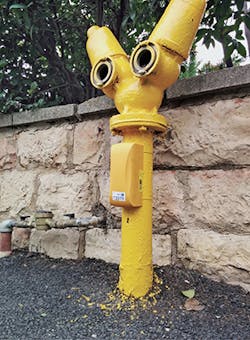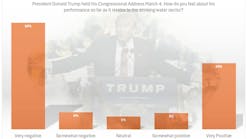Non-revenue water (NRW) is the difference between the amount of water that is produced by a water utility for consumption/use, and the amount of water that is actually billed to customers.
Often, people fail to put the seriousness of the non-revenue water problem for water utilities into perspective. Jeff Lipton, director of marketing for WaterSmart, helps to provide some insight. Based on his estimates that the average water utility loses about 20% of its water to NRW: “Imagine any other business in the world that would lose one-fifth of all its product to ‘breakage,’” he says.
NRW is a huge and costly problem—for utilities in the US and around the world. According to Ivan Nazzaretto, product manager for Smart Water Software with Schneider Electric, NRW is one of the most important sustainability issues in the water industry. It leads to avoidable operational expenditures (mainly energy), reducing water availability in resource-scarce areas, and increasing or diverting capital expenditures to find additional water sources to satisfy new or unmet customer demand.
“Sensitivity to water loss has not always been directly proportional to the magnitude of the problem,” says Nazzaretto. “Traditionally, water-rich geographies used to have a low perception of the direct costs and the impact of water loss on the environment. However, this attitude is rapidly changing in many countries as more stringent regulations are being applied, and customers and shareholders are acting as watchdogs of the efficiency of the water industry.”
How much of a problem is NRW globally? According to Zeev Efrat, CEO of Aquarius-Spectrum: “The average gap [between water produced and water properly paid for] ranges between 25 and 50% of the total water distributed globally,” he says.
And, according to one report, The Drivers of Non-Revenue Water: How Effective Are Non-Revenue Water Reduction Programs? published by the World Bank Group in August 2014, the total cost to water utilities caused by NRW on a worldwide basis is estimated to be $141 billion per year.
While one might imagine that NRW is more of an international rather than domestic problem, because of the availability of advanced technology in the US and often primitive water systems in other countries, NRW is also a serious problem stateside. “In 2007, the EPA estimated the amount of water lost in the US from distribution systems was 1.7 trillion gallons per year, with a national cost of $2.6 billion per year,” says Nazzaretto. “And, according to the American Water Works Association [AWWA], between five and ten billion kWh of power generated in the US in 2009 was consumed in the treating and pumping of water that was either leaked or not paid for by customers.”
In 2013, EPA estimated that the US “will need to spend over $200 billion on water systems over the next 20 years to upgrade transmission and distribution systems. Of this amount, $97 billion (almost half) is estimated to be needed for water loss control.”




